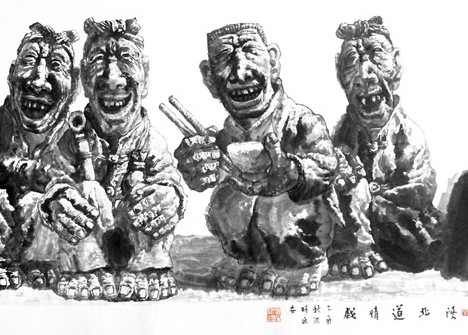
The Daoqing Play is a folk operetta popular in the Yellow River Valley. It originated from the chanting of Taoist scriptures in the Tang Dynasty, and developed into the folk art form of Daoqing dagu in the Song Dynasty in which singing alternated with narration. During the Qianlong Period of the Qing Dynasty, the singing and story-telling Daoqing Play which was popular in northern Shanxi was put on the stage, and became a type of drama favored by local audiences. Before and after that, the Daoqing Play popular in Lin County in western Shanxi were staged, and the Daoqing Play popular in Donghu in southern Shanxi were put on the stage twice during the Xianfeng period and the Xuantong period, but failed to be passed down. After the founding of People's Republic of China, Hedong Daoqing in southern Shanxi, Zhoukou Daoqing in Henan, and Languan Play in Shandong also gradually developed into stage dramas.
Early Daoqing Plays mainly reflected Taoist life and advocated Taoist doctrines. Mid-term plays were stories about Taoists cultivating virtues and persuading people to do good deeds. In the middle and later period, the plays largely gave expression to folk life. Daoqing Plays at different places have different tune names. In northern Shanxi they have Shua Hai'er, Xijiangyue, Langtaosha, etc; in Linxian County they have Seven-character Tune, Ten-character Tune, Zhongnan Tune, and so on. As to the accompanying instruments, there are stringed and wind instruments, such as flute, sihu (a traditional Chinese four-stringed fiddle), big banhu (a Chinese two-stringed fiddle) and small banhu, and percussion instruments like fisherman's drum, jianban (a percussion instrument), and instruments used to accompany bangzi. In respect of roles, there are hong (elderly and upright male roles), hei (painted faces), sheng (male roles), dan (female roles), and chou (clowns). The performance has more singing and reciting than actions and acrobatics, and excels in singing.





